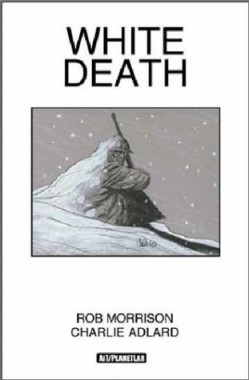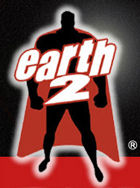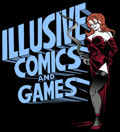| White
Death
We seem
to have a curious relationship with warfare, and by “we”
I mean humanity in general. No one appears to relish in
the idea of war; there are few who dream of battlefield
glory these days and fewer still who have seen war and wish
to remain a part of it.
My father
was drafted during Vietnam, and I’m thankful that
he never once set foot in that country, ending up running
communications in Germany at relay stations. He would likely
be an entirely different person had he experienced firsthand
the insanity of that time and place.
And
yet, humanity remembers its wars far better than its peace.
We measure our history by war: “The Peloponnesian
War,” “Civil War Era,” “Post-WWII,”
etc. We call those raised in the ‘20s and ‘30s,
who served and lived during WWII “The Greatest Generation,”
or at least Tom Brokaw does, and I’m sure there’s
more than one of us that remember the term “Cold War
Kids.” Our fiction reflects our paradoxical relationship
with war, recently in movies and series like Saving
Private Ryan and Band of Brothers. The War
genre has become entrenched in the American entertainment
media, and maybe it always has been.
But there are
wars we try to forget and oddly enough, it’s not the
wars that were the most horrific (‘Nam has a glut
of books, movies, and even comic books covering it), but
the ones that are simply overshadowed by other, slightly
more “glamorous” wars. The one I am speaking
of, the one that the graphic novel up for review concerns
is the war that should have ended all wars, but really ended
up laying the groundwork for WWII, which ended succinctly
all falsely noble concepts of warfare. I am talking about
World War I.
White
Death, by Rob Morrison and Charlie (Nobody)
Adlard is the story of the Italian front during the First
World War. It’s 1916 and the Italians are in the Trentino
mountain range, holding the line against the Austro-Hungarian
infantry. Private Pietro Aquasanta has just been put under
the command of Sergeant Major Orsini: an unrelenting bastard
of a superior officer that will hold the lines or push them
up, no matter the cost.
Aquasanta
grew up in these mountains and because of that he knows
exactly what to fear. More dangerous than any howitzer was
the White Death: an avalanche from the top off any of the
mountains that could bury entire platoons, and does so when
a grenade is thrown to cause the avalanche. Soon, Orsini
and the enemy is made aware of this tactic and it becomes
an even worse struggle as the soldiers on the ground need
not only worry about the enemy in the trenches, but in the
enemy hundreds of feet up.
Morrison’s
script is excellent, providing both a first-rate description
of the horrifying conditions of the Italian front, as well
as a personal look at the characters, keeping the scope
wide enough to encompass the war, but small enough to allow
the reader to really care about the characters. Aquasanta
is an incredibly complex character: a man who hates fighting,
but chooses to do it anyway, and does so on more than one
side of the conflict. Aquasanta is not some cookie-cutter
soldier boy; rather, Morrison has given him the voice of
the moralizer, but he has the actions of soldier. The reader
can see the Private’s dislike of what he is doing,
but he does it anyway, and not for glory, not for honor,
but simply because he is a soldier, and soldier’s
follow orders. The little ambiguities that Morrison instills
in this character make him thoroughly engaging, and he does
not stop with the main.
The
supporting characters are fleshed out and given their own
stories, independent from Aquasanta’s, but all tying
into one another eventually. Even the bastard Orsini isn’t
a straight stereotype of the glory-hounding leader, as Morrison
gives us a hard view of the main while supporting that view
in the story. The world around them is harsh enough to call
for this kind of man, scumbag though he might be, he is
the most likely to survive these wartime ordeals.
The
story itself is enclosed, beginning and ending with Aquasanta,
but suggesting that the war goes on, as it did. This appears
to be Morrison’s first and only foray into comic books,
unless this is Robbie Morrison using a shorter version of
his name, and he brings to it a level of sophistication
that few other writers might think to bring to a war comic.
Where other writers might focus too much on the horror of
warfare, Morrison brings in humanity and camaraderie to
balance it out, later using that same camaraderie to further
demonstrate the destructive potential of relationships in
thre trenches.
I would
like to pat myself on the back for calling this one ahead
of time; Charlie Adlard is a truly great artist, and the
potential I saw in his work from Nobody is reached
and surpassed here. Adlard has done the entire graphic novel
in charcoal and chalk, on gray paper, creating a depth and
texture that was not present in his line and ink work on
Nobody. The hazy effect created by the rubbed charcoal and
the whisps of chalk beautifully demonstrates the “fog
of war” aspect of trench warfare, and the use of charcoal
and chalk when fleshing out snowdrifts and banks makes the
snow real, almost touchable, giving it rich texture where
regular pencil work would only have large fields of white.
His panel work was good before, but with this story, he’s
expanded his panel repertoire and uses straight panels,
three-page long panels, vertical bar panels, etc. Charcoal
effects are what actually spawned gray tonal shading in
comics, and it is wonderful to see the technique authentically
in effect here.
And
Adlard’s facial work only improves in this medium.
Where I might have said before that his work was slightly
Frank Miller-esque, I’m amending that because the
sketchy quality is gone from his work, replaced by a smoother
and more emotive style of facial design that reminds me
more of Will Eisner and is the precursor to his equally
spectacular work on Robert Kirkman’s The
Walking Dead.
This graphic
novel is patently excellent; gorgeously drawn and well scripted,
Morrison and Adlard have made a great comic, which is something
to be said in the current climate of mediocrity in the comics
industry, as companies scramble to bring in the younger
audience. At $12.95, it is well worth the expenditure and
should be on any lover of the medium’s bookshelf.
|






